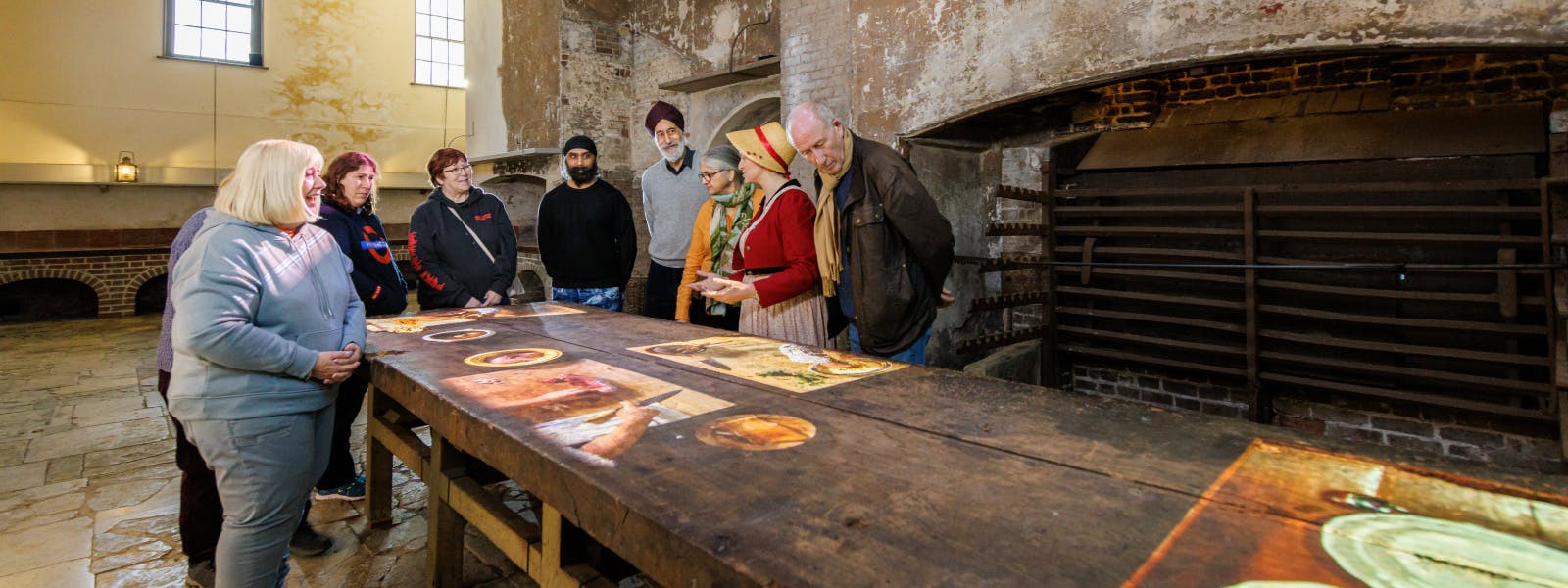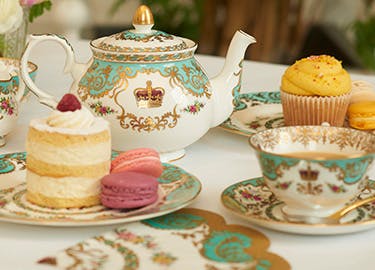
A preserved slice of life in the Georgian period
The Royal Kitchens remain preserved as they were in the Georgian period 200 years ago, when they were last used. They are one of the few buildings surviving from the complex that served the now-demolished White House. They were built around 1734-5 for Frederick, Prince of Wales, father of George III.
As you explore the kitchens, it’s easy to imagine them at their height – humming with the noise of life as 20 people laboured to produce food for the royal family and their household.
By some quirk of fate, the kitchen survived when the White House was demolished. But when Queen Charlotte died at Kew in 1818, the officials of the royal household simply locked the door and departed. The kitchen was left untouched for nearly 200 years.
Today, the Royal Kitchens evoke life on 6 February 1789, when George III was given back his knife and fork after his first bout of mental illness.
When
Open
Where
Located in Kew Gardens, near Kew Palace.
Ticketing information
Included in Kew Gardens admission
Buy Kew Palace ticketsDiscover Life 'Below Stairs' in a Georgian Royal Kitchen
Included in the staff were a master cook and an assistant, two yeomen, a groom, a turnbroach, a master scourer and his assistant, two boys and a child. They were assisted by a porter and a door keeper, with two coal porters and three men employed in the silver scullery. Covered dishes of food were taken from the kitchen by liveried servants who would arrange them all on the table for the diners to help themselves.
Together, this staff prepared and served vast quantities of food, including meat, poultry, vegetables and bread, to feed the royal family and their household:
- Over 5,000 lbs of meat was purchased every month.
- Pheasants, partridge, grouse and other game were often sent to the King by lords from their estates.
- Despite its expense, fish from both sea and river were served regularly. Oysters, shrimps, crayfish, prawns, crabs and lobster were also delivered.
- Much of the fruit and vegetables came from the estate at Kew and the King’s farm in Richmond.
- Bread was made in the bake house but pies, tarts and gateaux were often bought in.
- Over 700lbs of butter was used at Kew every month, which might be flavoured with anchovies, oysters or shrimps.
After the meal, scullery boys would spend hours scouring pots and pans with sand and soap.
In the Silver Scullery, used for storing and cleaning the silver tableware, you may be surprised to find a tin bath. This dates from the period when George was advised by his doctors to take warm baths for his health. A visitor to Kew Palace in 1821 was told that George III used to take his baths in the kitchen, to save his servants the bother of carrying the hot water further.

EXPLORE WHAT'S ON

- Things to see
- Tours and talks
The Great Pagoda
See The Great Pagoda at Kew Palace, now returned to its 18th-century splendour.
- Open
- Kew Palace
- Separate ticket

- Things to see
Queen Charlotte's Cottage
Discover a queen's rustic country retreat in the grounds of Kew Palace with a visit to Queen Charlotte’s Cottage.
- Open
- Kew Palace
- Included in Kew Gardens admission

- Things to see
Kitchen Garden
Wander through the edible Kitchen Garden at Kew - a veritable sanctuary for wildlife, created to serve the royal family when staying at Kew Palace.
- Open
- Kew Palace
- Included in palace admission (members go free)
BROWSE MORE HISTORY AND STORIES

George III, the Complex King
Dutiful, intelligent and cultured, but cruelly labelled ‘mad’

Queen Charlotte
Wife of George III and mother to 15 children

The royal kitchens at Kew
The kitchens have survived, practically untouched
Shop online

Shop food & drink
Feast your eyes on our wonderful selection of food inspired by our royal kitchen. Shop chocolates, preserves, jam, chocolate coins and the finest liqueurs.
From £4.00

Shop Georgian Gifts
The Georgian era was a time of elegance and enlightenment and this popular age has inspired our collection of books, luxury gifts, exquisite jewellery and unique dress up.
From £4.99

Shop Kew Palace gifts
The most intimate of our six royal palaces, Kew was built as a private house in 1631 and used by the royal family between 1729 and 1818. These gifts and souvenirs are all inspired by Kew Palace.
From £4.00
